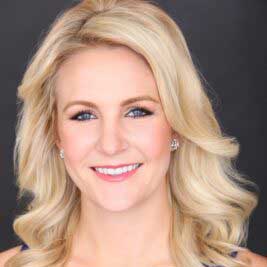
Top 100 Teacher Brady Riggs shares his best advice for conquering first-tee jitters.
Getty Images
I’ll never forget it: It was July 2001, and my dad and I were on the father-daughter golf trip of a lifetime to Monterey, Calif., and we were finally ready to tee off at the area’s crown jewel: Pebble Beach.
In the days leading up to this moment, we had strategized extensively. My dad was a very good player, a mid-single-digit handicap. He could hit the ball 240 yards off the tee, no problem. We had looked at course maps and grilled the starter on the carry required to cover the left-side fairway bunker. “Oh,” the starter remarked with a Scottish brogue, “hit it 240 down the left, you’ll have no problem with the bunker.”
The tee was crowded with resort guests and other golfers waiting for their turn. My dad went through his usual routine … and topped it. The ball went a few dozen yards, ending up short of the forward tees. All that planning, all that anticipation, and ugh. So deflating!
I was really proud of my dad, because he recovered well and actually managed to come away with a bogey, despite the botched start from the tee. But his experience is one I know is shared by many recreational players: whether it’s a bucket-list round at Pebble or your weekly tee time at the local muni, there’s just something about the first tee.
Maybe it’s a lack of warm-up or general preparedness, or maybe it’s being overly anxious about shooting a good score. Maybe, like at Pebble, the tee is surrounded by other players waiting to start their rounds, and you feel rushed or under pressure to perform. But first-tee jitters are a real thing, even for seasoned pros. Letting them get the best of you is a surefire way of getting your round off to an inauspicious start. How can we combat these nerves? I asked Top 100 Teacher Brady Riggs for his advice.
“It’s hard for everybody,” Riggs conceded. “If you’re not nervous there, then you probably don’t care. We all want to hit a good shot in front of people.”
Riggs said that one key to staying calm on the tee is to be realistic about the stakes.
“People tend to overvalue their shot and not realize that everybody else standing there is more worried about themselves hitting it than you hitting it,” he said.
Riggs then relayed a story about playing in a pro-am alongside longtime Tour pro Jesper Parnevik.
“He called everybody over and he said, ‘Hey, I just wanna let you guys know there’s nothing you can do that I haven’t done myself or seen before, so just take the pressure off a little bit, and realize that it’s just one of the many shots you’re gonna hit during the day.’”
Great advice — but Riggs realizes that sometimes it takes a bit of extra prep to put yourself in the right mindset to hit a good shot. One way to do it is to practice your opening shot on the range, with a full pre-shot routine. Another way to give yourself the best chance of hitting a good shot is to utilize the art of visualization.
“If you have a good picture in your mind of a destination after impact to get to, it’s better than trying to micro-manage a backswing or trying to be perfect,” Riggs said. “I always ask myself, what does a good shot look like? I will even say that out loud sometimes. Make sure you have a specific answer for yourself, so you have a good picture in your head.
“And then, as I’m walking into the shot, I’m looking at where I want the ball to land,” he continued. “And as soon as I take my eyes off of the target and I look at the ball, I’m thinking about where I want it to land. So either my eyes are on the finish line or my brain is on the finish line and then I have my normal number of waggles that I’ve always done. And then I try and keep the actual target connected to the target in my mind so that I’m staying attached to that and the shot I’m trying to hit rather than worrying about how I’m going about it.”
Finally, if all else fails, Riggs says you should just aim to finish your swing in balance.
“Say to yourself, ‘I’m gonna swing through and get to a balanced finish,’” he said. “If you do that, two things are probably going to happen: One, you have a better chance of hitting a good shot, and two, at least you looked good at the end, so maybe somebody from a distance didn’t see how bad the shot was because they saw your follow-through and they thought you executed.”











